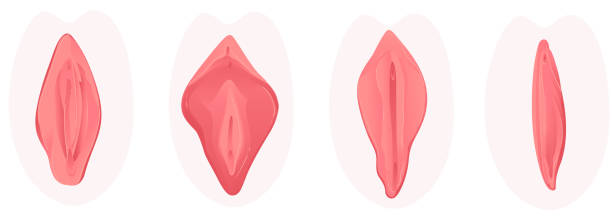With a culture that thrives on social media, it is unsurprising that Instagram has educated me more on sexual health and wellbeing than sex education classes at school. Looking back at some of the playground myths and misunderstandings that made my teenage years more confusing than they ever needed to be, I’m hoping that the next generation of schoolkids are getting the sex ed they need and deserve.
‘Sex is centred around penetration & male ejaculation’
Female pleasure, who? It speaks volumes that I grew up knowing more about male pleasure than my own. Sex culture is so fixated on penetration as the main event, while everything else is reduced to ‘foreplay’ – something that’s a nice warm-up but not totally essential. Several studies have identified an ‘orgasm gap’ whereby between 30-55% of women don’t orgasm during sex, so it’s about time we make some changes to the way we prioritise each other’s pleasure in the bedroom.
‘You can tell if you have an STI by looking at your genitals’
It’s a classic:
‘Have you been tested recently?’
‘Well no, but I don’t have anything’
Unfortunately, that’s just not how it works. A lot of the time STI symptoms aren’t as obvious as those slightly traumatic pictures of pubic lice you can find on Google Images. People can be asymptomatic or have only mild symptoms, which is why it’s so important to be regularly tested even if everything is looking and feeling normal down there. Casual and unprotected sex epitomise student life, so if you’re having sex then please make sure you’re taking steps to protect yourself and others. Your sexual health is your responsibility.
‘Sex between non-heterosexual partners doesn’t count as sex’
Spoiler alert: Not everyone is straight, and sex without vaginal penetration is still sex. I hope the next generation grow up confident that gender and sex aren’t the rigid concepts that my friends and I once learnt they were.
‘It’s weird to be open about masturbation’

Let’s all agree now to stop acting like solo sex isn’t normal. Why should there be so much shame attached to something that has so many benefits? Exploring your body can help you discover likes and dislikes in the bedroom, lower stress and release those oh-so-important feel-good endorphins. Sounds like a win-win to me?!
‘STI’s are dirty and a result of poor decision making’
Did you know that in England there were 447,694 new STI diagnoses in 2018? That is over 1000 every day – yep, they truly are that common. Words like ‘clean’ and ‘dirty’ should be outdated by now, but they are still thrown around when discussing STI status. However, STI’s are never anything to be ashamed of, and no STI will ever determine your worth.
‘Putting a condom on a banana = sex education’

Condoms are a great and effective way to prevent unwanted pregnancies and STI’s, but it is reality check time. There are so many factors to consider when choosing contraception and, as it turns out, there’s a whole minefield of troubles you can encounter when using condoms. You’ve got to juggle expiry dates, rips and tears, different sizes, latex allergies, not to mention the unspoken reality that they can actually wriggle off during sex (I’m pretty sure we all thought that only happened in ‘Love, Rosie’).
‘Getting ‘tested’ for STI’s means you’re getting tested for everything’
We are all told nowadays that we should ‘get tested’ regularly, which is a healthy and empowering habit that sexually-active folks should definitely get into. But most of those free postal kits, that land on doormats of student houses all over Leeds on the daily, only test for chlamydia and gonorrhoea. They are great for some peace of mind, but it’s worth booking an appointment at a clinic each time you have a new sexual partner for more comprehensive results.
(P.S. it’s also worth bearing in mind that STI’s have ‘window periods’, which is the length of time it can take between catching an infection and when it will show up on a test. So, if you’re getting tested a couple of days after sex with a new partner, STI’s won’t always be detectable. Also, most sexual health practitioners won’t be testing you for herpes, unless you have visible symptoms.)
‘All labia look the same’

Time to give those biology diagrams some diversity. I think a lot of young girls grew up thinking that their labia were abnormal – not helped by ideas that people get from porn and the craze of labiaplasties. But as it turns out, no matter the shape, size, colour, symmetry or hairy-ness, vulva’s are pretty great just the way they are.
What sex-ed fails do you remember from your school days?
Header image credit: The Badger Herald

